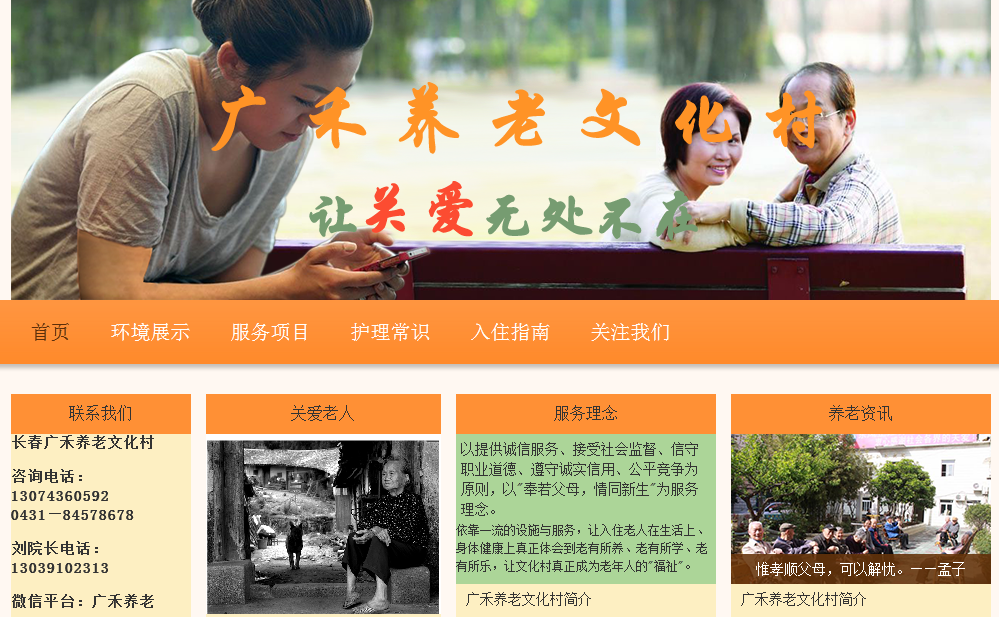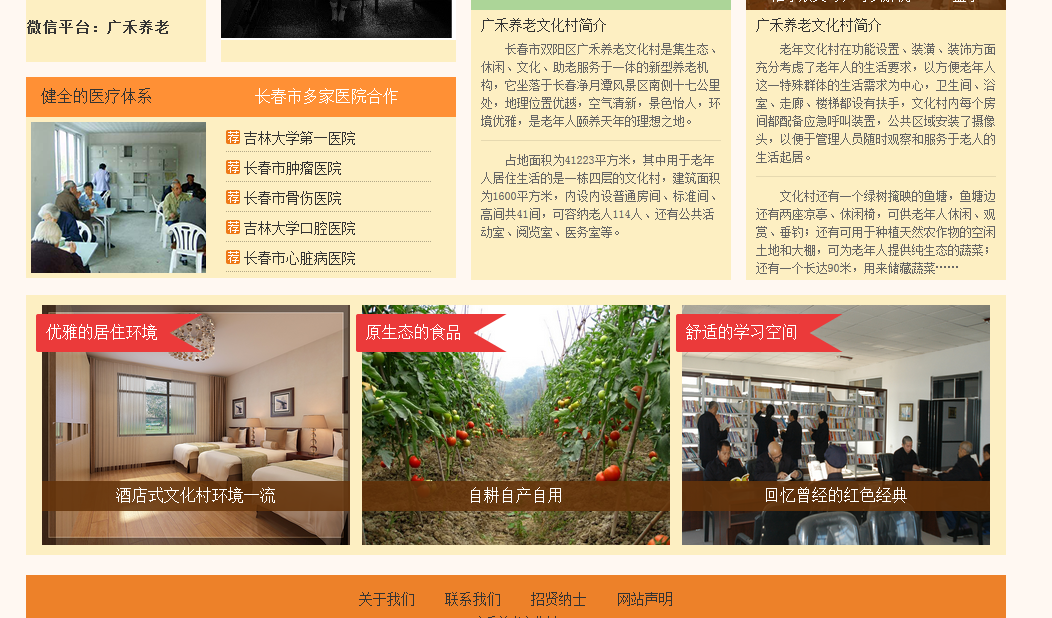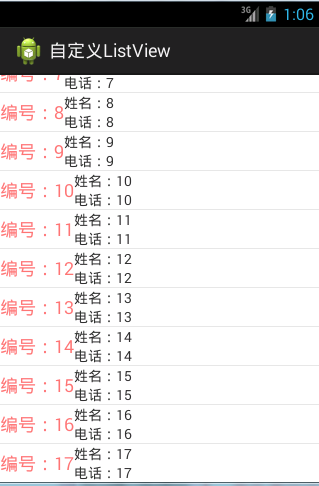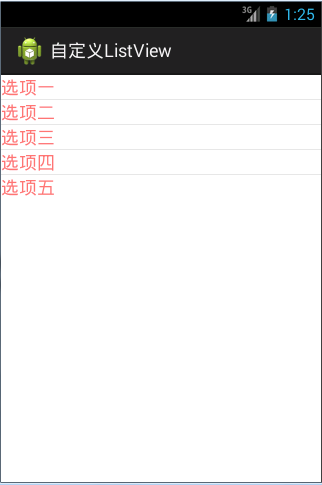2013年4月18日
#
在SoapUI的Request URL中,每次輸入的URL中含有的大寫字母會(huì)自動(dòng)轉(zhuǎn)換為小寫字母,導(dǎo)致請(qǐng)求不了 ,
這個(gè)問題在SoapUI 5.1.2和5.2.1版本中都存在,具體的解決辦法是在HTTP TestRequest Properties的屬性中,在Endpoint中輸入對(duì)應(yīng)的含有大寫字母的URL即可。
Java使用網(wǎng)易郵箱服務(wù)器發(fā)送郵件實(shí)例
1 下載發(fā)送 mail 需要的 jar 包
a ctivation.jar 與 mail.jar
2 創(chuàng)建 SendMail 類
3 代碼如下
import java.util.Date;
import java.util.Properties;
import javax.mail.Address;
import javax.mail.Message;
import javax.mail.Session;
import javax.mail.Transport;
import javax.mail.internet.InternetAddress;
import javax.mail.internet.MimeMessage;
import cn.founder.common.globals.Constants;
public class SendMail {
public int send(String tfrom, String tto, String ttitle, String tcontent) {
Properties props = new Properties();
props.put("mail.smtp.host", "smtp.263.net"); //自己到網(wǎng)上查找網(wǎng)易發(fā)郵件的 smtp 服務(wù)地址 你的發(fā)件郵箱如果是 163 你就查找 163 的發(fā)件服務(wù)器
props.put("mail.smtp.auth", "true");
Session s = Session.getInstance(props, null);
s.setDebug(true);
Message message = new MimeMessage(s);
try {
Address from = new InternetAddress(tfrom);
message.setFrom(from);
Address to = new InternetAddress(tto);
message.setRecipient(Message.RecipientType.TO, to);
sun.misc.BASE64Encoder enc = new sun.misc.BASE64Encoder();
message.setSubject("=?utf-8?B?"+enc.encode(ttitle.getBytes("utf-8"))+"?=");
message.setContent(tcontent, "text/html;charset=utf-8");
message.setSentDate(new Date());
message.saveChanges();
Transport transport = s.getTransport("smtp");
// 第一個(gè)參數(shù)是發(fā)件服務(wù)器 第二個(gè)是你發(fā)件的郵箱名 第三個(gè)是你發(fā)件郵箱的密碼
transport.connect("smtp.263.net", ” 發(fā)件郵箱 ” , ” 發(fā)件郵箱密碼 ” );
transport.sendMessage(message, message.getAllRecipients());
transport.close();
return 0;
} catch (Exception e) {
e.printStackTrace();
return 1;
}
}
/**
* getEmailServiceIp
* @return EmailServiceIp
*/
public static void main(String[] args) {
//第一個(gè)參數(shù) 發(fā)件郵箱 第二個(gè)收件郵箱 第三個(gè) 郵件內(nèi)容
new SendMail().send("yunlong090614@163.com", "1063342004@qq.com", "更改密碼校驗(yàn) ", " 尊敬的用戶你好,您的校驗(yàn)碼為: 65432</br>xxxx");
}
<%@ taglib prefix="fmt" uri="
http://java.sun.com/jsp/jstl/fmt"% >
<jsp:useBean id="now" class="java.util.Date" />
<c:set var="currentday">
<fmt:formatDate value="${now}" type="both" dateStyle="long" pattern="yyyy-MM-dd" var="nowdate"/>
</c:set>
${nowdate} > ${result.openEndTimeOpen }=${nowdate > result.openEndTimeOpen}
安裝32位的Oracle客戶端( instantclient-basic-win32-11.2.0.1.0)。Win7 64位系統(tǒng)暫無PLSQLDeveloper,所以下一個(gè)32位的。
下載instantclient-basic-win32-11.2.0.1.0.zip (一定得是32位的,不要下錯(cuò)了版本,Oracle官網(wǎng)有下載),將其解壓至Oracle安裝目錄的Product下(本機(jī)命名為:instantclient_11_2):D:\Oracle\app\Dell\product\instantclient_11_2
拷貝數(shù)據(jù)庫(kù)安裝根目錄下的一個(gè)文件夾:D:\Oracle\app\Dell\product\11.2.0\dbhome_1
\NETWORK到Oracle客戶端目錄下D:\Oracle\app\Dell\product\instantclient_11_2(其實(shí)只需要 NETWORK\ADMIN\tnsnames.ora)
修改oracle客戶端tnsnames.ora文件(目錄在D:\Oracle\app\Dell\product\instantclient_11_2\NETWORK\ADMIN\tnsnames.ora)
SELECT createDate,shortName,collNum,fullName FROM college
ORDER BY CONVERT( shortName USING gbk)
近幾日打印東西都是不成功,顯示不能發(fā)現(xiàn)打印機(jī),處理方法如下:
Java中的三元運(yùn)算符為:條件?條件為true值:條件為false的值
比如gender為0顯示男,其余顯示女,我們可以這么寫:
<c:choose> <c:when test= "${gender eq 0}" > 男</c:when> <c:otherwise> 女</c:otherwise> </c:choose>
但是不是顯得太麻煩了?其實(shí)我們這里就可以使用EL表達(dá)式中的三元運(yùn)算符了,上面可以簡(jiǎn)化為:
${gender eq 0?"男":"女"}
這樣是不是簡(jiǎn)練了很多?在JSTL和EL處理非A即B的時(shí)候,三元運(yùn)算符簡(jiǎn)單了許多。
轉(zhuǎn)載請(qǐng)注明:觀測(cè)者 » JSP中EL表達(dá)式三元運(yùn)算符的使用
jar -cvf safety.war *
摘要: 引用地址http://www.cnblogs.com/xdp-gacl/p/3467245.html
用Jquery控制文本框只能輸入數(shù)字和字母
在公司開發(fā)WinForm項(xiàng)目時(shí),發(fā)現(xiàn)公司自主研發(fā)的textbox控件非常強(qiáng)大,可以實(shí)現(xiàn)"只能輸入數(shù)字"、"只能輸入字母"和"只能輸入數(shù)字和字母"的三種輸入限制,這樣就可以精確控制用戶輸入的內(nèi)容范圍,讓"用戶永遠(yuǎn)沒有辦法輸入...
閱讀全文
SVN更新失敗,提示locked
瀏覽:3571 | 更新:2013-10-23 11:03
打開eclipse彈出Error:could not open D:\java\lib\i386\jvm.cfg' 運(yùn)行中 輸入regedit 沒有修改注冊(cè)表,解決辦法是:
分類: Java 2012-07-23 09:46 1431人閱讀 收藏 舉報(bào) 最近在eclipse中開發(fā)android項(xiàng)目,用到了jquery mobile框架,則會(huì)涉及到新建html文件,發(fā)現(xiàn)eclipse不自帶新建html文件的插件,必須得新建一個(gè)其他形式的文件,譬如xml格式的文件,然后重命名,后綴名改成html,覺得這樣老麻煩的,所以在網(wǎng)上發(fā)現(xiàn)了Eclipse HTML Editor,不過此插件似乎只支持新建html文件,不支持其格式化。網(wǎng)上看了其他一個(gè)html格式化的插件Eclipse Tidy,不過用了后,發(fā)現(xiàn)格式化后的html一點(diǎn)都不符合代碼審讀標(biāo)準(zhǔn)。也不知道是不是自己哪邊沒設(shè)置好,還是本來就是那樣。 現(xiàn)在就暫先不管Eclipse Tidy了,看看如何安裝Eclipse HTML Editor。
1.下載GEF(依賴包):
http://www.eclipse.org/downloads/download.php?file=/tools/gef/downloads/drops/3.7.2/R201201171043/GEF-ALL-3.7.2.zip
然后解壓,把解壓得到的features和plugins兩文件夾放到eclipse安裝目錄下plugins文件夾中
2.下載HTMLEditor
http://amateras.sourceforge.jp/cgi-bin/fswiki_en/wiki.cgi?page=EclipseHTMLEditor
只有一個(gè)tk.eclipse.plugin.htmleditor_2.1.0.jar文件
直接復(fù)制到eclipse\plugins里面
摘要: 基本資料:mysql> select version();+-----------+| version() |+-----------+| 5.0.16 |+-----------+ mysql> select * from t1;+----+------+| id | name |+----+------+| 1 | aa || 2 | bb || 3 | cc |+---...
閱讀全文
前言:之前做的ListView實(shí)現(xiàn)RadioButton的功能有bug,當(dāng)ListView控件的內(nèi)容超出屏幕可見區(qū)域時(shí),滑動(dòng)ListView控件會(huì)報(bào)錯(cuò),下面有為什么出錯(cuò)和解決方法進(jìn)行的注解,不多說了,看源碼,有更好的解決辦法請(qǐng)指教
1,MainActivity.java
package com.excetop.listradio; //解決辦法: 每次都重新獲取View //這段代碼來實(shí)現(xiàn)單選功能 //這里實(shí)現(xiàn)單選框選的回顯,解決了單選框移出屏幕范圍未選中狀態(tài)當(dāng)?shù)谝淮渭虞dListView控件時(shí) convertView為空 //所以當(dāng)ListView控件沒有滑動(dòng)時(shí)都會(huì)執(zhí)行這條語(yǔ)句 //2,因?yàn)檫@里對(duì)radioButton的id進(jìn)行重新設(shè)置,滑動(dòng)ListView時(shí)convertView不為空,上面的語(yǔ)句就沒法得到radioButton對(duì)象,這條語(yǔ)句就會(huì)報(bào)空指針異常
2,item.xml
<?xml version="1.0" encoding="utf-8"?>http://schemas.android.com/apk/res/android "
<?xml version="1.0" encoding="utf-8"?>http://schemas.android.com/apk/res/android "
一,Layout
1,main.xml
<?xml version="1.0" encoding="utf-8"?>http://schemas.android.com/apk/res/android "
2,item.xml
<?xml version="1.0" encoding="utf-8"?>http://schemas.android.com/apk/res/android "
二,Activity
1,MainActivity
package com.excetop.listradio;
import java.util.ArrayList;
import android.app.Activity;
public class MainActivity extends Activity {
@Override
@Override
@Override
@Override
處理多個(gè)fragment之間replace刷新問題[轉(zhuǎn)]
每次創(chuàng)建fragment對(duì)象都會(huì)重新走onCreateView方法,所以多個(gè)fragment互相替換會(huì)重新刷新界面, @Override
創(chuàng)建重復(fù)的背景圖片
在drawable目錄下創(chuàng)建一個(gè)repeat_bg.xml: src是引用圖片的名稱
1
2
3
4
5
6
7
8
1
<?xml version="1.0" encoding="utf-8"?>
2
3
android:src="@drawable/bg"
4
android:tileMode="repeat" />
然后在布局的xml文件中可以這樣引用:
1
2
3
4
5
6
7
8
1
<LinearLayout android:layout_width="fill_parent"
2
android:layout_height="fill_parent"
3
android:background="@drawable/repeat_bg">
4
</LinearLayout>
通常情況下,SQL Server里面的生成SQL腳本,只會(huì)包含數(shù)據(jù)庫(kù)及表的字段結(jié)構(gòu),而不會(huì)包含表的數(shù)據(jù),也就是SQL腳本里面只有Create database,Create table 這樣的語(yǔ)句,沒有insert into。
因?yàn)镾QL Server并不包含這個(gè)功能,只能靠第三方的代碼了。
以下存儲(chǔ)過程可以實(shí)現(xiàn):
CREATE PROCEDURE dbo.UspOutputData
@tablename sysname
AS
declare @column varchar(1000)
declare @columndata varchar(1000)
declare @sql varchar(4000)
declare @xtype tinyint
declare @name sysname
declare @objectId int
declare @objectname sysname
declare @ident int
set nocount on
set @objectId=object_id(@tablename)
if @objectId is null -- 判斷對(duì)象是否存在
begin
print 'The object not exists'
return
end
set @objectname=rtrim(object_name(@objectId))
if @objectname is null or charindex(@objectname,@tablename)=0 --此判斷不嚴(yán)密
begin
print 'object not in current database'
return
end
if OBJECTPROPERTY(@objectId,'IsTable') < > 1 -- 判斷對(duì)象是否是table
begin
print 'The object is not table'
return
end
select @ident=status&0x80 from syscolumns where
id=@objectid and status&0x80=0x80
if @ident is not null
print 'SET IDENTITY_INSERT
'+@TableName+' ON'
declare syscolumns_cursor cursor
for select c.name,c.xtype from syscolumns c where
c.id=@objectid order by c.colid
open syscolumns_cursor
set @column=''
set @columndata=''
fetch next from syscolumns_cursor into @name,@xtype
while @@fetch_status < >-1
begin
if @@fetch_status < >-2
begin
if @xtype not in(189,34,35,99,98) --timestamp不需處理,image,text,ntext,sql_variant 暫時(shí)不處理
begin
set @column=@column+case when len(@column)=0 then'' else ','end+@name
set @columndata=@columndata+case when len(@columndata)=0 then '' else ','','','
end
+case when @xtype in(167,175) then
'''''''''+'+@name+'+''''''''' --varchar,char
when @xtype in(231,239) then
'''N''''''+'+@name+'+''''''''' --nvarchar,nchar
when @xtype=61 then '''''''''+convert(char(23),'+@name+',121)+''''''''' --datetime
when @xtype=58 then '''''''''+convert(char(16),'+@name+',120)+''''''''' --smalldatetime
when @xtype=36 then '''''''''+convert(char(36),'+@name+')+''''''''' --uniqueidentifier
else @name end
end
end
fetch next from syscolumns_cursor into @name,@xtype
end
close syscolumns_cursor
deallocate syscolumns_cursor
set @sql='set nocount on select ''insert
'+@tablename+'('+@column+' ) values(''as ''--'','+@columndata+','')'' from
'+@tablename print
'--'+@sql exec(@sql)
if @ident is not null
print 'SET IDENTITY_INSERT
'+@TableName+' OFF'
GO
使用方法:
exec UspOutputData 你的表名
選擇【執(zhí)行模式】為“以文本顯示結(jié)果”,然后將運(yùn)行后的結(jié)果存成.sql,加上用SQL Server生成的數(shù)據(jù)庫(kù)腳本就可以了。
另外可以利用第三方工具,導(dǎo)出數(shù)據(jù)可以用powerbuilder。在database painter里面,用SQL選出,或者直接打開表,點(diǎn)擊生成的list datawindow,然后在菜單file->save rows as->選擇SQL,那么生成的SQL語(yǔ)句就包括建表和insert數(shù)據(jù)的SQL了。
轉(zhuǎn)載:
http://blog.sina.com.cn/s/blog_49b531af0100i74v.html
前言
本章內(nèi)容是android.widget.CompoundButton,翻譯來自德羅德,再次感謝德羅德 !期待你一起參與Android API 的中文翻譯,聯(lián)系我over140@gmail.com。
轉(zhuǎn)載
正文
一、結(jié)構(gòu)
public abstract class CompoundButton extends Button Checkable
java.lang.Object
android.view.View android.widget.TextView android.widget.Button android.widget.CompoundButton
二、概述
一個(gè)帶有選中 / 未選中狀態(tài)的 按鈕。當(dāng)按鈕按下或點(diǎn)中時(shí)自動(dòng)改變狀態(tài)。
三、公共方法
public boolean dispatchPopulateAccessibilityEvent (AccessibilityEvent event)
在子視圖的構(gòu)建時(shí)分派一個(gè)輔助事件。(譯者注:通過源碼可以看出,視圖構(gòu)建時(shí)設(shè)置其選中狀態(tài)。)
參數(shù)
event 事件
返回值
如果事件全部完成返回 True。
public boolean isChecked ()
(譯者注:是否選中)
public void onRestoreInstanceState (Parcelable state)
允許視圖重新應(yīng)用以前通過 onSaveInstanceState()生成代表內(nèi)部的狀態(tài)。這個(gè)函數(shù)決不調(diào)用一個(gè)空的狀態(tài)。
參數(shù)
state 返回以前調(diào)用 onSaveInstanceState()保存下來的狀態(tài)。
public Parcelable onSaveInstanceState ()
允許視圖生成一個(gè)代表內(nèi)部的狀態(tài),以后可用于創(chuàng)建一個(gè)與之相同的新的實(shí)例。這種狀態(tài)應(yīng)該只包含非持久或以后不能夠重建的信息。例如,你決不存儲(chǔ)你當(dāng)前在屏幕上的位置,因?yàn)檫@會(huì)在視圖的層面上重新計(jì)算放置一個(gè)新的實(shí)例。
你可以存儲(chǔ)到這里的一些例子:一個(gè)文本框中當(dāng)前光標(biāo)的位置(但通常不是文字本身,文字通常保存在內(nèi)容提供者 (content provider)或其他持久的儲(chǔ)存中),一個(gè)列表視圖中的當(dāng)前選中項(xiàng)。
返回值
返回一個(gè)包含視圖當(dāng)前狀態(tài)的 Parcelable對(duì)象,或沒有什么狀態(tài)保存時(shí)返回 null。默認(rèn)實(shí)現(xiàn)返回 null。
public boolean performClick ()
如果視圖定義了 OnClickListener 監(jiān)聽器,調(diào)用此方法來執(zhí)行。
返回值
定義了的 OnClickListener被調(diào)用返回 True,否則返回 False
public void setButtonDrawable (Drawable d)
給按鈕背景設(shè)置一個(gè)可繪制對(duì)象(如:圖像)
參數(shù)
d 用作背景的可繪制對(duì)象(如:圖像)
public void setButtonDrawable (int resid)
通過資源 Id給按鈕背景設(shè)置一個(gè)圖像
參數(shù)
resid 作為背景圖像的資源 id
public void setChecked (boolean checked)
改變按鈕的選中狀態(tài)
參數(shù)
checked true 選中, false非選中
public void setOnCheckedChangeListener (CompoundButton.OnCheckedChangeListener listener)
注冊(cè)一個(gè)在按鈕狀態(tài)發(fā)生改變時(shí)執(zhí)行的回調(diào)函數(shù)
參數(shù)
listener 當(dāng)選中狀態(tài)改變時(shí)調(diào)用的函數(shù)
public void toggle ()
改變選中狀態(tài)為當(dāng)前狀態(tài)的逆狀態(tài)
四、受保護(hù)方法
protected void drawableStateChanged ()
在視圖狀態(tài)的變化影響到所顯示可繪制的狀態(tài)時(shí)調(diào)用這個(gè)方法。
確保在重載時(shí)中調(diào)用父類方法
protected int[] onCreateDrawableState (int extraSpace)
為當(dāng)前視圖生成新的可繪圖區(qū)狀態(tài)。這個(gè)方式當(dāng)緩存的圖像繪圖區(qū)狀態(tài)確定失效時(shí)通過視圖系統(tǒng)調(diào)用。你可以使用 getDrawableState()方法重新取得當(dāng)前的狀態(tài)。
參數(shù)
extraSpace 如果為非零,這是你應(yīng)該返回的數(shù)組在你可以存放你的狀態(tài)的額外條目的數(shù)量。
返回值
返回一個(gè)記錄著視圖中當(dāng)前繪圖區(qū)狀態(tài)的數(shù)組
protected void onDraw (Canvas canvas)
實(shí)現(xiàn)你自己的繪制。
參數(shù)
canvas 在畫布上繪制背景
protected boolean verifyDrawable (Drawable who)
如果你的視圖子類顯示他自己的可視化對(duì)象,他將要重寫此方法并且為了顯示可繪制返回 true。此操作允許進(jìn)行繪制時(shí)有動(dòng)畫效果。
確認(rèn)當(dāng)重寫從方法時(shí),需調(diào)用父類相應(yīng)方法。
參數(shù)
who 需判斷的可繪制對(duì)象( Drawable)。如果是你要顯示的對(duì)象,返回 True,否則返回調(diào)用父類的結(jié)果。
返回值
boolean 如果可繪制對(duì)象( Drawable )已經(jīng)在視圖中顯示,返回 True 否則返回 false 。并且此處不允許使用動(dòng)畫。
別人覺得你是不是在打工,這個(gè)不重要。重要的是你自己千萬別把自己當(dāng)成打工的,換個(gè)角度去看,是公司給你發(fā)工資,替你交學(xué)費(fèi),練著你自己的能力和經(jīng)驗(yàn)。你遇到產(chǎn)品經(jīng)理、技術(shù)高手,或者公司創(chuàng)始人,從他們身上學(xué)到成功的經(jīng)驗(yàn),甚至是失敗的教訓(xùn)。
我覺得有的人對(duì)創(chuàng)業(yè)
我希望大家這樣來理解創(chuàng)業(yè),把創(chuàng)業(yè)看成是一種心態(tài),為了實(shí)現(xiàn)一個(gè)目標(biāo),孜孜不倦的去追求。只要你不滿足于現(xiàn)狀,想法設(shè)法去突破,那就是創(chuàng)業(yè)。如果你是一個(gè)在校學(xué)生,是搞電腦,如果你不滿足于只是把學(xué)分學(xué)好,不滿足于把考試應(yīng)付好,而是花了很多時(shí)間提高你的編程能力,下了很大功夫來研究很多軟件,那這也是創(chuàng)業(yè)。學(xué)習(xí)是這樣,工作也是這樣,只要你勇敢的正視問題,積極的去解決問題,敢于去承擔(dān)未來的風(fēng)險(xiǎn),這其實(shí)就是創(chuàng)業(yè)心態(tài)。
如果我們把創(chuàng)業(yè)都理解成我今天出去成立一個(gè)公司,明天上市,后天市值超越Facebook,對(duì)不起,從來沒有過這樣成功的例子。天底下哪里有這么一帆風(fēng)順的事?把你放在一馬平川的大平原上,你憑著直覺沿著直線走,其實(shí)從高空看下去,你走出來的路是彎的,是曲折的。創(chuàng)業(yè)也是一樣,雖然心里有個(gè)目標(biāo),但是要達(dá)到那個(gè)目標(biāo),你得解決一個(gè)個(gè)實(shí)際的問題。人的路都是一步一步走出來的,而且這個(gè)路一定不是直線。
在中國(guó)更是這樣,環(huán)境確實(shí)太復(fù)雜了。特別是在創(chuàng)業(yè)早期,你沒有經(jīng)驗(yàn),沒有資源,你頭腦里的創(chuàng)新可能僅僅就是一個(gè)想法,一個(gè)主意,但如果實(shí)現(xiàn)不了,那它就什么都不是。但是,要實(shí)現(xiàn)這個(gè)想法,這個(gè)主意,你需要有判斷力,需要有經(jīng)驗(yàn),需要有知識(shí)。所以,我一直提倡大學(xué)生剛畢業(yè)的時(shí)候,不要頭腦一熱就攢出一個(gè)公司來,最好的方法是加入一家創(chuàng)業(yè)公司,甚至可以加入風(fēng)險(xiǎn)很大的種子公司,去學(xué)習(xí)創(chuàng)業(yè),感受創(chuàng)業(yè)。
很多人說,我加入別人的公司,那我不就成了一個(gè)打工的了嗎?給別人打工,誰(shuí)認(rèn)真干呀。錯(cuò)了,如果你覺得自己是打工的,那你一輩子都是打工的。別人覺得你是不是在打工,這個(gè)不重要。重要的是你自己千萬別把自己當(dāng)成打工的,換個(gè)角度去看,是公司給你發(fā)工資,替你交學(xué)費(fèi),練著你自己的能力和經(jīng)驗(yàn)。你遇到產(chǎn)品經(jīng)理、技術(shù)高手,或者公司創(chuàng)始人,從他們身上學(xué)到成功的經(jīng)驗(yàn),甚至是失敗的教訓(xùn)。
如果你加入這個(gè)公司,這個(gè)公司兩年之后死了,恭喜你,你一分錢沒損失,你參與一個(gè)活生生的公司從生到死的例子,你以后就可以避免重蹈覆轍。你一分錢沒花,你讓一個(gè)公司死了一回,你學(xué)到了如何避免失敗的教訓(xùn),這是一個(gè)多么值的事。這比你拿多少工資,比你到一個(gè)有名的大公司,有用多了。
別人一見你,都說你在北京某大公司工作,太了不起。那都是虛榮心,一點(diǎn)意義沒有。所以我一直強(qiáng)調(diào),如果你懷著創(chuàng)業(yè)的心態(tài),那么你在什么狀態(tài)都可以叫創(chuàng)業(yè)。等到有一天,當(dāng)你有一股強(qiáng)烈的沖動(dòng)要辦公司去創(chuàng)業(yè)的時(shí)候,有可能你會(huì)發(fā)現(xiàn),人各有所長(zhǎng),你不一定是做CEO的料,但你可能是優(yōu)秀的CTO,你可能是很好的銷售主管,這個(gè)時(shí)候你就知道找什么樣的合伙人去創(chuàng)業(yè)了。
所以,我鼓勵(lì)大家創(chuàng)業(yè),其實(shí)是鼓勵(lì)大家培養(yǎng)創(chuàng)業(yè)的精神,我不主張各位一定要出去成立一個(gè)公司,那只是一個(gè)形式。美國(guó)硅谷很多人不是先裝模作樣地成立一個(gè)公司,而是在家里的車庫(kù),利用業(yè)余時(shí)間先搞出來一個(gè)產(chǎn)品,這也是創(chuàng)業(yè)的一部分。
我不希望傳授什么成功學(xué),我最希望大家能夠想清楚未來幾年自己心里想要什么。在你創(chuàng)業(yè)的時(shí)候,不論遇到誘惑還是遇到挑戰(zhàn),都能夠記住我說的那句話:拒絕平庸,與眾不同。你不一定要追隨當(dāng)時(shí)的主流,也要能耐得住寂寞,甚至要有一種韌性,敢于屢敗屢戰(zhàn),在未來長(zhǎng)達(dá)五年或者八年、十年的時(shí)間里一直堅(jiān)韌不拔地去探索,我相信五年以后、十年以后,可能中國(guó)新一代的企業(yè)家,中國(guó)新一代的創(chuàng)新領(lǐng)袖應(yīng)該從各位里面誕生。
android library projects cannot be launched
properties 在android選項(xiàng)中將 is library中將前面的勾去了
BaseAdapter方式
<ListView
</LinearLayout>list_item.xml
<?xml version="1.0" encoding="utf-8"?> MainActivity.java
package com.hyl.listViewpack;
import java.util.ArrayList;
import android.R.string;
public class MainActivity extends Activity {
@Override
}
</LinearLayout>
ArrayAdapter方式 SimpleAdapter方式
創(chuàng)建一個(gè)顯示的界面xml
<ListView
android:id="@+id/lv_show_view"
android:layout_width="match_parent"
android:layout_height="wrap_content"
android:layout_alignParentLeft="true"
android:layout_alignParentTop="true"
android:layout_marginTop="16dp" >
</ListView>
再創(chuàng)建一個(gè)item.xml
<?xml version="1.0" encoding="utf-8"?>
<LinearLayout xmlns:android="
android:layout_width="match_parent"
android:layout_height="match_parent"
android:orientation="vertical" >
<TextView
android:layout_width="250dip"
android:layout_height="wrap_content"
android:id="@+id/title"
/>
<TextView
android:layout_width="match_parent"
android:layout_height="wrap_content"
android:id="@+id/timelength"
/>
</LinearLayout>
導(dǎo)入AsyncHttpClient需要的類
之后
本文章只是自己學(xué)習(xí)筆記,大家要慎重借鑒
package com.shxt.controller;
import java.io.File;
import javax.servlet.ServletException;
public class DownLoadServlet extends HttpServlet {
public void doGet(HttpServletRequest request, HttpServletResponse response)
this.doPost(request, response);
public void doPost(HttpServletRequest request, HttpServletResponse response)
response.setContentType("application/x-msdownload");\\02 _開發(fā)第一個(gè)無狀態(tài)會(huì)話bean.avi";// "想辦法找到要提供下載的文件的物理路徑+文件名";
OutputStream outp = null;
byte[] b = new byte[1024];
while ((i = in.read(b)) > 0) {
}
摘要: 轉(zhuǎn)自:轉(zhuǎn)載請(qǐng)標(biāo)明出處:http://blog.csdn.net/anyoneking/archive/2008/05/23/2472145.aspx1.回傳一個(gè)普通的String字符串.2.回傳一個(gè)組織好的Javascript字符串.3.回傳一個(gè)Json對(duì)象.(需要引入json.jar)4.回傳一個(gè)XML對(duì)象.基本實(shí)現(xiàn)如下:其中測(cè)試頁(yè)面為:
<%@page language="j...
閱讀全文
經(jīng)過試驗(yàn)后發(fā)現(xiàn)HTML錨點(diǎn)在JSP中并不兼容。兩者表示錨點(diǎn)的方法有所不同
HTML錨點(diǎn)
<a href="#1">goto1</a>
.
.
.
.
<a name="1">111</a>
這樣從goto1可以定位到111
JSP錨點(diǎn)
<a href="javascript:void(0)" onclick="document.getElementById('1').scrollIntoView();">goto1</a>
。
。
。
<a id="1">1111</a>
HTML to PDF conversion for your website or application
http://www.htm2pdf.co.uk/
通過js事件獲取元素中的屬性值
<div id="c-title1" onclick="openAndClose(this)" value="content1" >報(bào)告概覽</div>
function openAndClose(myelement) {
}
js中動(dòng)態(tài)生成表格
function deleteTable() {
var objTable = document.getElementById("myT");
}
jsp中的表單引發(fā)事件
<input type="button" onclick="createTable()" name="ty" value="試題類型" />
<input type="button" onclick="deleteTable()" name="re" value="清除表格" />
<table id="myT">
</table>
JSTL獲取list的大小,jstl獲取list 的長(zhǎng)度,EL表達(dá)式獲取list的長(zhǎng)度,EL表達(dá)式獲取list大小 在jsp頁(yè)面中不能通過${list.size}取列表長(zhǎng)度,而是 <%@ taglib uri="http://java.sun.com/jsp/jstl/core" prefix="c" %> <%@ taglib prefix="fn" uri="http://java.sun.com/jsp/jstl/functions" %> <c:out value="${fn:length(list)}"></c:out>
Spring MVC使用動(dòng)態(tài)代理實(shí)現(xiàn)事務(wù)控制
applicationContext.xml文件中配置
<?xml version="1.0" encoding="UTF-8"?>
<beans xmlns="http://www.springframework.org/schema/beans"
xmlns:xsi="http://www.w3.org/2001/XMLSchema-instance" xmlns:context="http://www.springframework.org/schema/context"
xmlns:jdbc="http://www.springframework.org/schema/jdbc" xmlns:jee="http://www.springframework.org/schema/jee"
xmlns:tx="http://www.springframework.org/schema/tx" xmlns:jpa="http://www.springframework.org/schema/data/jpa"
xsi:schemaLocation="
http://www.springframework.org/schema/beans http://www.springframework.org/schema/beans/spring-beans-3.1.xsd
http://www.springframework.org/schema/context http://www.springframework.org/schema/context/spring-context-3.1.xsd
http://www.springframework.org/schema/jdbc http://www.springframework.org/schema/jdbc/spring-jdbc-3.1.xsd
http://www.springframework.org/schema/jee http://www.springframework.org/schema/jee/spring-jee-3.1.xsd
http://www.springframework.org/schema/tx http://www.springframework.org/schema/tx/spring-tx-3.1.xsd
http://www.springframework.org/schema/data/jpa http://www.springframework.org/schema/data/jpa/spring-jpa.xsd"
default-lazy-init="true">
<!--
spring在啟動(dòng)的時(shí)候,會(huì)默認(rèn)加載會(huì)默認(rèn)加載整個(gè)對(duì)象實(shí)例圖,從初始化ACTION配置、到
service配置到dao配置、乃至到數(shù)據(jù)庫(kù)連接、事務(wù)等等。這樣可以減少web服務(wù)器在運(yùn)行時(shí)的負(fù)擔(dān),但是對(duì)于開發(fā)者來說無疑是效率極低的一個(gè)設(shè)置了。
還好,spring提供了default-lazy-init屬性,其配置形式如下,applicationContext.xml中: <
beans default-lazy-init ="true" > < bean class ="org.xxxx.bean" >
。。。。。。 </beans>
spring配置默認(rèn)default-lazy-init為false,當(dāng)配置為true時(shí)sping不會(huì)再去加載整個(gè)對(duì)象實(shí)例圖,大大減少了初始化的時(shí)間,減少了spring的啟動(dòng)速度。
這樣做只是為了在開發(fā)過程中節(jié)約啟動(dòng)時(shí)間,在部署到實(shí)際環(huán)境中,倒是沒必要設(shè)置default-lazy-init為true。畢竟部署到實(shí)際環(huán)境中不是經(jīng)常的事,每次啟動(dòng)1分鐘倒不是大問題,而且可以提高服務(wù)器效率。
當(dāng)然,也不是所有的beans都能設(shè)置default-lazy-init成為true.對(duì)于scheduler的bean不能用lazy-init
< beans default-lazy-init ="true" > < bean class
="org.springframework.scheduling.quartz.SchedulerFactoryBean" > <
property name ="triggers" > < list > < ref bean ="buildHtmlTrigger" />
< ref bean ="askTrigger" /> < ref bean ="mailSenderTrigger" /> < ref
bean ="topicDetailBuildTrigger" /> < ref bean ="forumBuildTrigger" />
< ref bean ="topicBuildTrigger" /> </ list > </ property > </ bean >
</ beans > 這樣的話。所有的scheduler就都不管用了。所以請(qǐng)大家要注意。
-->
<!-- 使用annotation 自動(dòng)注冊(cè)bean, 并保證@Required、@Autowired的屬性被注入 -->
<context:component-scan base-package="com.edufe">
<context:exclude-filter type="annotation"
expression="org.springframework.stereotype.Controller" />
</context:component-scan>
<context:property-placeholder
ignore-resource-not-found="true"
location="classpath*:/application.properties,
classpath*:/application.development.properties" />
<!-- 創(chuàng)建數(shù)據(jù)源 -->
<bean id="dataSource" class="org.apache.commons.dbcp.BasicDataSource"
destroy-method="close">
<property name="driverClassName" value="${jdbc.driver}" />
<property name="url" value="${jdbc.url}" />
<property name="username" value="${jdbc.username}" />
<property name="password" value="${jdbc.password}" />
</bean>
<!-- 使用嵌入式數(shù)據(jù)庫(kù)H2 -->
<!--
<jdbc:embedded-database id="dataSource" type="H2"> <jdbc:script
location="classpath:sql/h2/schema.sql" /> <jdbc:script
location="classpath:sql/h2/import-data.sql" />
</jdbc:embedded-database>
-->
<!-- 創(chuàng)建jdbcTemplate對(duì)象 -->
<bean id="jdbcTemplate" class="org.springframework.jdbc.core.JdbcTemplate">
<property name="dataSource" ref="dataSource" />
</bean>
<!-- 在容器文件中配置bean(service,dao,domain,action,數(shù)據(jù)源), -->
<!--
bean的作用是, 當(dāng)我們spring框架加載的時(shí)候,spring就會(huì)自動(dòng)創(chuàng)建一個(gè)bean,并放入內(nèi)存 即產(chǎn)生UserService
user=new UserService(); user.setName("張三");
-->
<!--
<bean id="userService" class=""> 這里就體現(xiàn)出了注入的概念 <property name="name">
<value>張三</value> </property> 在UserService中引用ByeService的對(duì)象ref是個(gè)引用
<property name="byeS" ref="byeService" /> </bean>
-->
<!-- 處理事務(wù) -->
<!-- 生成一個(gè)事務(wù)管理對(duì)象 -->
<bean id="transactionManager"
class="org.springframework.jdbc.datasource.DataSourceTransactionManager">
<constructor-arg index="0" ref="dataSource">
</constructor-arg>
</bean>
<!-- 生成默認(rèn)事務(wù)定義對(duì)象 -->
<bean id="def" class="org.springframework.transaction.support.DefaultTransactionDefinition"></bean>
</beans>
在dao中
@Autowired
private DataSourceTransactionManager transactionManager;
@Autowired
private DefaultTransactionDefinition def;
public int excuteTrac() {
int temp = 0;
// 批插入
String sql1[] = new String[4];
// 向第一個(gè)表插入的語(yǔ)句
sql1[0] = "insert into usermbo( ID, USERNAME, age) values('122','22','22')";
sql1[1] = "insert into usermbo( ID, USERNAME, age) values('133','33','33')";
sql1[2] = "insert into usermbo( ID, USERNAME, age) values('144','44','33')";
sql1[3] = "insert into usermbo( ID, USERNAME, age) values('155','55','33')";
String[] sql2 = new String[3];
// 向第二個(gè)表插入的語(yǔ)句
sql2[0] = "insert into address (NO, NAME) values('33','33')";
// 此條數(shù)據(jù)是錯(cuò)誤數(shù)據(jù) 插入會(huì)出現(xiàn)異常
sql2[1] = "insert into address (NO, NAME) values('eee','44')";
sql2[2] = "insert into address (NO, NAME) values('144','44')";
TransactionStatus status = transactionManager.getTransaction(def);
try {
int[] a = jdbcTemplate.batchUpdate(sql1);
int[] b = jdbcTemplate.batchUpdate(sql2);
try {
transactionManager.commit(status);
} catch (Exception e) {
System.out.println("事務(wù)提交異常");
}
} catch (Exception ex) {
System.out.println("出現(xiàn)事務(wù)異常");
try {
transactionManager.rollback(status);
} catch (IllegalTransactionStateException e) {
System.out.println("回滾數(shù)據(jù)異常");
}
temp = -1;
}
return temp;
}
JdbcTemplate使用事務(wù)控制批處理
//在dao中寫的一個(gè)方法
public int excuteTrac() {
int temp = 0;
// 批插入
String sql1[] = new String[4];
//向第一個(gè)表插入的語(yǔ)句
sql1[0] = "insert into usermbo(USERNAME,age,PASSWORD) values(' 23 ','3','45')";
sql1[1] = "insert into usermbo(USERNAME,age,PASSWORD) values('22 ','22','22')";
sql1[2] = "insert into usermbo(USERNAME,age,PASSWORD) values(' 44 ','44','4')";
sql1[3] = "insert into usermbo(USERNAME,age,PASSWORD) values(' 55 ','55','55')";
String[] sql2 = new String[3];
//向第二個(gè)表插入的語(yǔ)句
sql2[0] = "insert into address(NO,NAME) values('21','33')";
// 此條數(shù)據(jù)是錯(cuò)誤數(shù)據(jù) 插入會(huì)出現(xiàn)異常
sql2[1] = "insert into address(NO,NAME) values('ee','44')";
sql2[2] = "insert into address(NO,NAME) values('44','44')";
DefaultTransactionDefinition def = new DefaultTransactionDefinition();
DataSourceTransactionManager transactionManager = new DataSourceTransactionManager(
jdbcTemplate.getDataSource());
TransactionStatus status = transactionManager.getTransaction(def);
try {
int[] a = jdbcTemplate.batchUpdate(sql1);
int[] b = jdbcTemplate.batchUpdate(sql2);
for (int x : a) {
System.out.println(x);
}
for (int x : b) {
System.out.println(x);
}
} catch (Exception ex) {
System.out.println("出現(xiàn)事務(wù)異常");
// transactionManager.rollback(status);
temp = -1;
} finally {
transactionManager.commit(status);
}
return temp;
}













點(diǎn)滴滴.png)